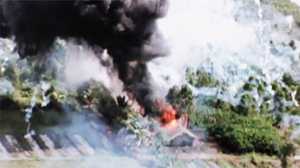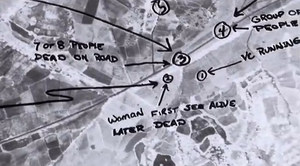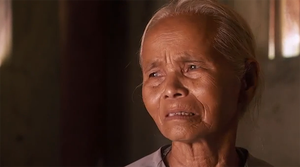December 1, 1967: Charlie Company Heads to Vietnam
After advanced training at Schofield Barracks in Hawaii, a group of soldiers known as Charlie Company, departs for Vietnam's Quang Ngai province. Charlie Company, First Battalion, 20th Infantry Regiment, 11th Infantry Brigade, 23rd Infantry Division is comprised of five platoons (three rifle and one weapons and one headquarters.) Leading the group, the well-known and well-respected Captain Ernest L. Medina had earned the nickname "Mad Dog" from his high expectations and his quick temper when these expectations were not met.
William L. Calley, Lieutenant of Charlie Company's 1st Platoon, struggled with basic leadership and was often ridiculed and belittled by Medina, who called Calley "Sweetheart."
December 3, 1967
The men receive an orientation on the war by instructors from the 4th Infantry Division Noncommissioned Officer (NCO) Academy. The orientation includes instruction in basic patrol techniques, how to call in fire support, and how to handle prisoners. A Judge Advocate General teaches Charlie Company how to distinguish Vietcong from noncombatants.
December 6, 1967
Charlie Company establishes an 11th Brigade fire base at landing zone Carrington in the southern Quang Ngai Province. Work at Carrington is comprised of digging up bunkers, setting up latrines, and practicing patrol and search and destroy missions. The members of Charlie Company typically remember this time as an enjoyable one, with plenty of free time to go to the beaches and patronize the local bars.
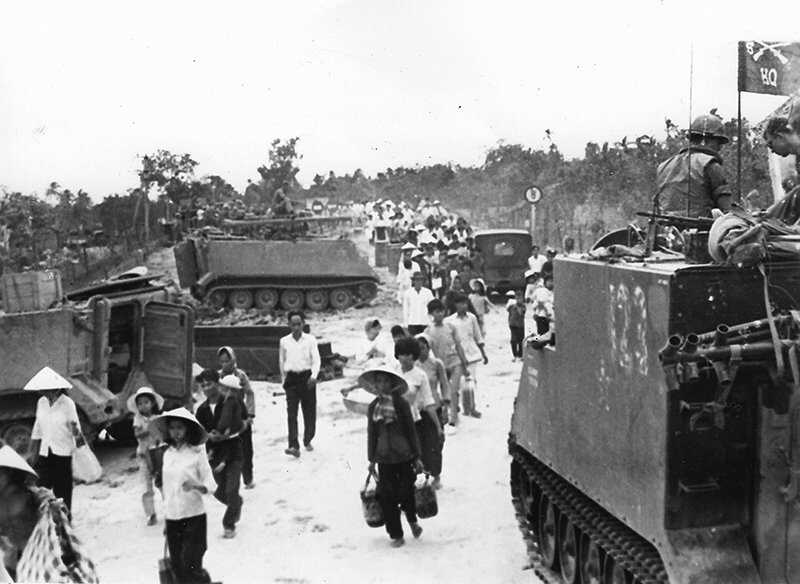
Shortly after midnight, the Vietcong and the North Vietnamese army launches the Tet Offensive against South Vietnam, attacking 36 of 44 provincial capitals.
Charlie Company watches the fighting in Quang Ngai City from their remote location north of the city at landing zone "Dottie." The men of Charlie Company had been assigned to this area as part of Task Force Barker only four days earlier, and stationed in Quang Ngai province, an area particularly known as a Vietcong stronghold and the site of the worst fighting of the war.
Task Force Barker, a 500-man strike force, was assembled to destroy the Vietcong 48th Force Battalion, a group that is known to be both disciplined and dangerous. The success of the 48th is due to small-scale attack operations, effectively impairing the enemy while protecting the core of their unit. Task Force Barker, designated after Lieutenant Colonel Frank Barker, is stationed in northern Quang Ngai and comprised of the Alpha, Bravo, and Charlie Companies.
February 1, 1968
The Communist offensive, known as the Tet Offensive, is repelled by heavy American and South Vietnamese firepower, and the 48th Battalion retreats toward the coast through Pinkville, a region that earns its name from a section highlighted in pink on American military maps.
Early February, 1968
Charlie Company conducts regular patrols of the area in an attempt to engage the Vietcong, but they have little direct contact. Though few members of the Vietcong 48th are actually seen, the tension from their obvious presence and the constant onslaught of artillery fire causes a few members of Charlie Company to break down and Captain Medina to increasingly berate Lieutenant Calley.
February 25, 1968
The 1st and 2nd Platoons of Charlie Company stumbles across a minefield, killing three men and wounding a dozen more.
The month of February has been devastating for Charlie Company. Frustration and anger from the loss of their companions led to aggression from traumatized soldiers.
Early March, 1968
Intelligence reaches Lieutenant Barker that the Vietcong 48th Battalion is almost certainly near the villages of My Lai, regrouping and garnering strength. Officers believe that a surprise attack on the 48th could wipe them out.
March 14, 1968
While on a patrol, the popular Sergeant George Cox is killed by a booby trap, and two other GI's are seriously injured. In one of the first documented instances of outright aggression, frustrated and angry members of Charlie Company lash out — while passing through a Vietnamese village on their return to camp, troops shoot and kill a woman civilian working in a field.
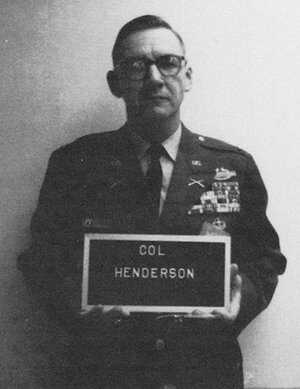
March 15, 1968
10:00AM
Colonel Oran Henderson takes over the 11th Brigade, the parent unit of Task Force Barker.
1:00PM
Captain Medina and the other commanders are briefed about increased intelligence that points to a small group of villages called My Lai as the haven for the 48th Vietcong Battalion. This intelligence will later prove faulty at best.
Colonel Henderson addresses the task force, telling soldiers that the next morning they will have the opportunity to meet the enemy head on and encouraging the troops to be more aggressive. Barker and Captain Eugene Kotouc tell the troops that any Vietnamese civilians will have left for the markets in Quang Ngai City by the time the attack is scheduled to begin at 7:30am. Any civilians remaining in the villages would be considered Vietcong or actively sympathetic to the Vietcong.
That afternoon, unit commanders go on a reconnaissance flight of My Lai 4, a village called Son My, to scout landing zones.
5:00PM
Captain Medina addresses Charlie Company after the reconnaissance flight with orders for the following day. Medina "embellishes" Barker's orders and adds a "revenge element" in his briefing. He tells his men they will be outnumbered two to one, with 250 to 280 members of the 48th hiding outside of Son My. Charlie Company will be airlifted south of the village and will attack Son My, destroying the enemy forces. Medina encourages his men to destroy the crops and kill any livestock seen; "mention was also apparently made of the burning of dwellings."
Captain Earl Michles gives his company, Bravo, orders for the next day's operations. Aero-scout teams called "sharks" will survey the area south of the My Lai villages by helicopter. One of these sharks is led by Warrant Officer Hugh Thompson.
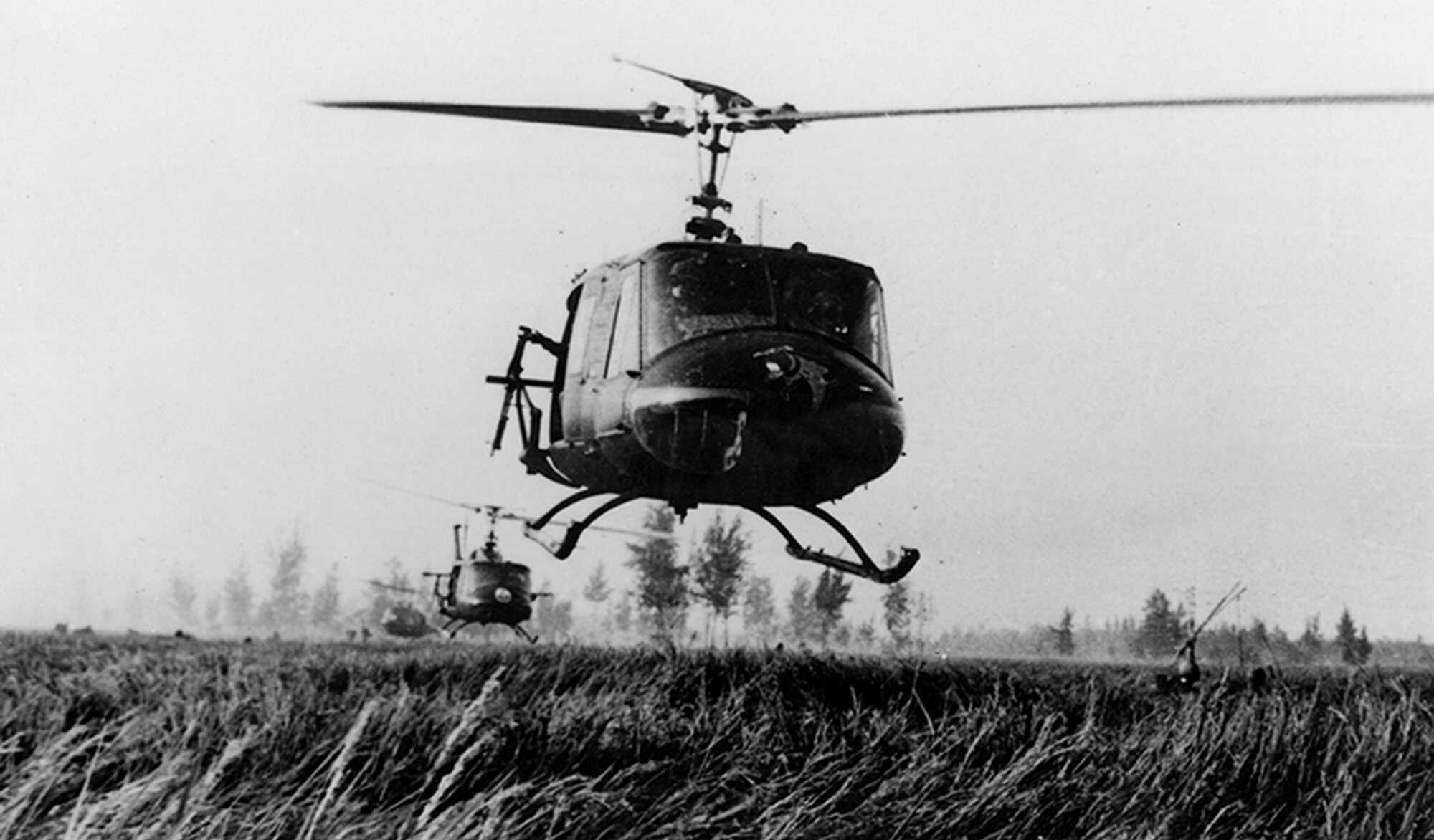
March 16, 1968: The Day of the Massacre
5:30AM
Charlie Company is ordered out of their bunks to gather gear and receive ammunition.
7:22AM
Nine helicopters — the first "element" — leave landing zone Dottie. This includes the 1st Platoon led by Lieutenant Calley and the 2nd Platoon led by Lieutenant Stephen Brooks.
While flying toward the western part of the hamlet, troops from Delta Company (from the 6th and 11th Artillery Battalion) shoot into Son My, the focus of the operation, for three to five minutes. The purpose of this artillery fire was to clear the landing zone, but instead it sends villagers running back into the village in fear instead of to the market.
7:30AM
The first element of helicopters lands in the paddy fields outside the village. Troops receive conflicting reports as to whether the landing zone is "cold" (no incoming fire) or "hot" (receiving fire).
7:38 AM
A second lift of men takes off from landing zone Dottie and heads toward My Lai. This lift includes the rest of the 2nd Platoon, Lieutenant Jeffrey LaCross' 3rd Platoon, and Sergeant Ron Haeberle, an army photographer assigned to Charlie Company for the day.
Lieutenant Calley moves his men into a defensive position along the western edge of the village, securing the landing zone for the next lift. Lieutenant Brooks moves his men to the northwest edge of the village for the same purposes.
While Calley and Brooks are moving their men, several villagers attempt to leave their hiding places and are shot.
7:40AM
Warrant Officer Thompson, flying around the village in his "shark" scouting position, chases several armed Vietcong in black pajamas. Although the door gunners fire, they are unable to confirm the Vietcong had been hit.
7:47AM
The second element of helicopters arrives at the landing zone outside the village. When these helicopters take off again, they report receiving fire from a hamlet. The landing zone is declared "hot."
During this second lift, the sharks circling the village spot and kill four armed Vietcong on trails outside the village.
7:50AM
The two lead platoons from the first helicopter element begin moving through the village. Sergeant David Mitchell leads the first squad, followed by Lieutenant Calley and a squad of about 24 GI’s, then Sergeant L.G. Bacon's squad and finally Sergeant Isaiah Cowan. As they move into My Lai the men shoot many fleeing Vietnamese and bayonet others. They throw hand grenades into houses and bunkers and destroy livestock and crops.
7:50-8:30AM
The two platoons in the village begin rounding up approximately 20-50 civilians (mostly women, children and old men,) pushing them along trails to a dirt road south of the village, and placing them under guard. Another group of 70 civilians are moved to the east of the village.
Soldiers begin killing the civilians without pretext. Men are stabbed with bayonets or shot in the head. One GI pushes a man down a well and throws an M26 grenade in after him. Over a dozen women and children praying by a temple are shot in the head by passing soldiers.
7:58AM
Captain Medina radios the operations center and reports 15 Vietcong have been killed.
It is reported that 300-500 Vietnamese civilians are fleeing southwest towards Quang Ngai City. A squadron led by Lieutenant LaCross opens fire on this group, and kills between three and 15 civilians.
Lieutenant Calley's platoon enters Son My from the south. In a hut, one soldier finds three children and a wounded woman and old man. The soldier shoots the man in the head, later claiming it was an act of mercy.
8:15AM
Two soldiers come across a woman carrying an infant and walking with a toddler; they fire at her. An elderly woman is spotted running down a path with an unexploded M79 grenade lodged in her stomach. One soldier forces a woman around the age of 20 to perform oral sex on him while holding a gun to a four-year-old child's head.
8:30AM
Captain Medina reports to Lieutenant Colonel Barker that 84 enemy have been killed. Barker radios this information to the tactical operations center. Medina directs Lieutenant Brooks to recover weapons from two Vietcong killed by the sharks while running from the small settlement of Binh Tay, north of Son My.
The group of civilians that had been herded to the south of the village are all shot by the soldiers guarding them. These soldiers then round up more civilians from inside the village and move them to a ditch. A fire squad is left guarding the people in the ditch, a number that has grown to about 50. The squads led by Sergeant Mitchell and Sergeant Bacon move east of the ditch and set up a defensive perimeter, further entrapping the people in the ditch.
Lieutenant Brooks' 2nd platoon fans out across the western part of the village. As they move through the village, they shoot down fleeing civilians, keeping no detainees. During this pass, approximately 50 to 100 civilians are killed, and at least two rapes are committed.
8:45AM
The Third Platoon moves into Son My and begins to burn and destroy homes, kill the remaining livestock, and destroy crops and foodstuffs. They shoot and kill a group of seven to 12 women and children.
On his way back to landing zone Dottie to refuel, Warrant Officer Thompson spots a group of wounded Vietnamese citizens south of My Lai. He marks their positions with smoke grenades and radios soldiers on the ground to provide medical assistance. According to Lieutenant Colonel Barker, however, the message he gets is "eight or nine dinks with web gear" have been wounded south of My Lai, and he directs Captain Medina to recover the equipment.
9:00AM
Lieutenant Calley reaches the drainage ditch into which the civilians had been herded and gives the order to start killing them. Within ten minutes, all are shot down by members of the 1st Platoon. Witnesses to the shooting report anywhere between 75 and 150 Vietnamese killed. None of the Vietnamese is armed.
Coming back from his refueling stop, Warrant Officer Thompson sees that the people whom he noticed previously as being injured are now shot dead.
9:15AM
Thompson's helicopter moves to the eastern side of the village, where he can see dozens of bodies in the irrigation ditch, some still visibly alive and moving. Thompson decides to intervene. In an unsanctioned maneuver, Thompson lands the helicopter on the east ditch and confronts a sergeant, but the officer says the only way he could help the people was to put them out of their misery.
After seeing the destruction to both property and civilians inside of the village, Captain Medina radios Lieutenant Brooks of the 2nd Platoon to stop the killing. This ceasefire order is never given to the 1st and 3rd Platoons, who continue killing for the next hour.
Medina's Charlie Company group moves into the village from the south, and interrogates an old man. The old man tells them that 30-40 Vietcong had stayed in My Lai overnight but had left the area before the assault began.
9:20AM
Minutes after Warrant Officer Thompson takes flight from the east ditch of Son My, his crew witnesses a sergeant shooting people in a ditch.
9:40AM
South of the village, the crew of Thompson's observation helicopter watches as a small group of soldiers approach a young woman lying wounded on the ground. Thompson had previously marked this woman with smoke. A captain walks up to the woman, prods her with his foot, and shoots her in the head. (This captain is later identified as Medina.)
9:45AM
Thompson flies to the northeast corner of the village where a small group of about 12-15 women and children are seeking refuge in a homemade bomb shelter. They are pursued by members of Charlie Company’s 2nd Platoon who are on their way back from Binh Tay. Thompson lands his craft between Charlie Company and the civilians and radios the gunships that he needs help. His crew members point their guns at the men of Charlie Company, and Thompson tells them to fire if the GI's begin shooting at the civilians.
Jumping out of his helicopter, Thompson confronts Lieutenant Stephen Brooks, who offers no assistance while Thompson coaxes the civilians out of the bunker and onto the shark.
9:50AM
Thompson begs the other gunships to land and help rescue more civilians. Medevac pilots Dan Millians and Brian Livingston land their sharks and fly nine or 10 civilians four miles away towards Quang Ngai City.
10:00AM
Lieutenant Jeffrey LaCross' 3rd Platoon continues killing. They gather a group of 10 women and children, and a few soldiers begin to sexually abuse a 15-year-old Vietnamese girl. Just after army photographer Sergeant Ron Haeberle takes a picture of the group, they are shot down and killed.
Captain Medina and Lieutenant LaCross meet at the edge of the village. During the conversation, some command group members stray off and kill several wounded Vietnamese.
10:20AM
Reports indicate that Private Herbert Carter shoots himself in the foot while trying to clear his pistol.
10:25AM
Private Carter is med-evacuated by Barker's command helicopter and flown back to landing zone Dottie.
11:00AM
Captain Medina and his command group enter My Lai and walk through the village. After they reach the edge, Medina orders a lunch break for the entire company. The platoon leaders give him an estimate of enemy casualties: 90 killed. Medina reports this number to Task Force Barker. Later investigations will reveal estimates between 347 to 507 civilian casualties.
11:15AM
Thompson's aircraft arrives back at landing zone Dottie. Thompson tells his section leader, Captain Barry Lloyd, what he had seen. Thompson confronts the company commander, Major Fred Watke in the aviation section's operations van. Major Watke passes the information on to Lieutenant Colonel Barker, who radios Major Charles Calhoun to find out what is happening on the ground and put an end to it.
1:30 PM
Still in the field, Charlie Company passes through My Lai 5 on their way to join Bravo Company. In My Lai 5, Charlie Company rounds up a large group of civilians and takes eight to ten young Vietnamese men with them for interrogation.
3:30 PM
Colonel Henderson receives a second report of civilian casualties and directs a company back through Son My village to get an exact count. However, Major General Joster, the commander of the Americal Division, radios that no further examination is necessary and countermands the order.
4:00 PM
Charlie Company arrives at its night defensive position, where Captain Eugene Kotouc, an intelligence officer for Task Force Barker, interrogates and kills at least two of the 10 Vietnamese suspects that both Bravo and Charlie Companies had gathered together during the afternoon.
10:00 PM
Back at landing zone Dottie, Major Watke reports the allegations of Warrant Officer Thompson and other soldiers to Lieutenant Colonel John L. Holladay.
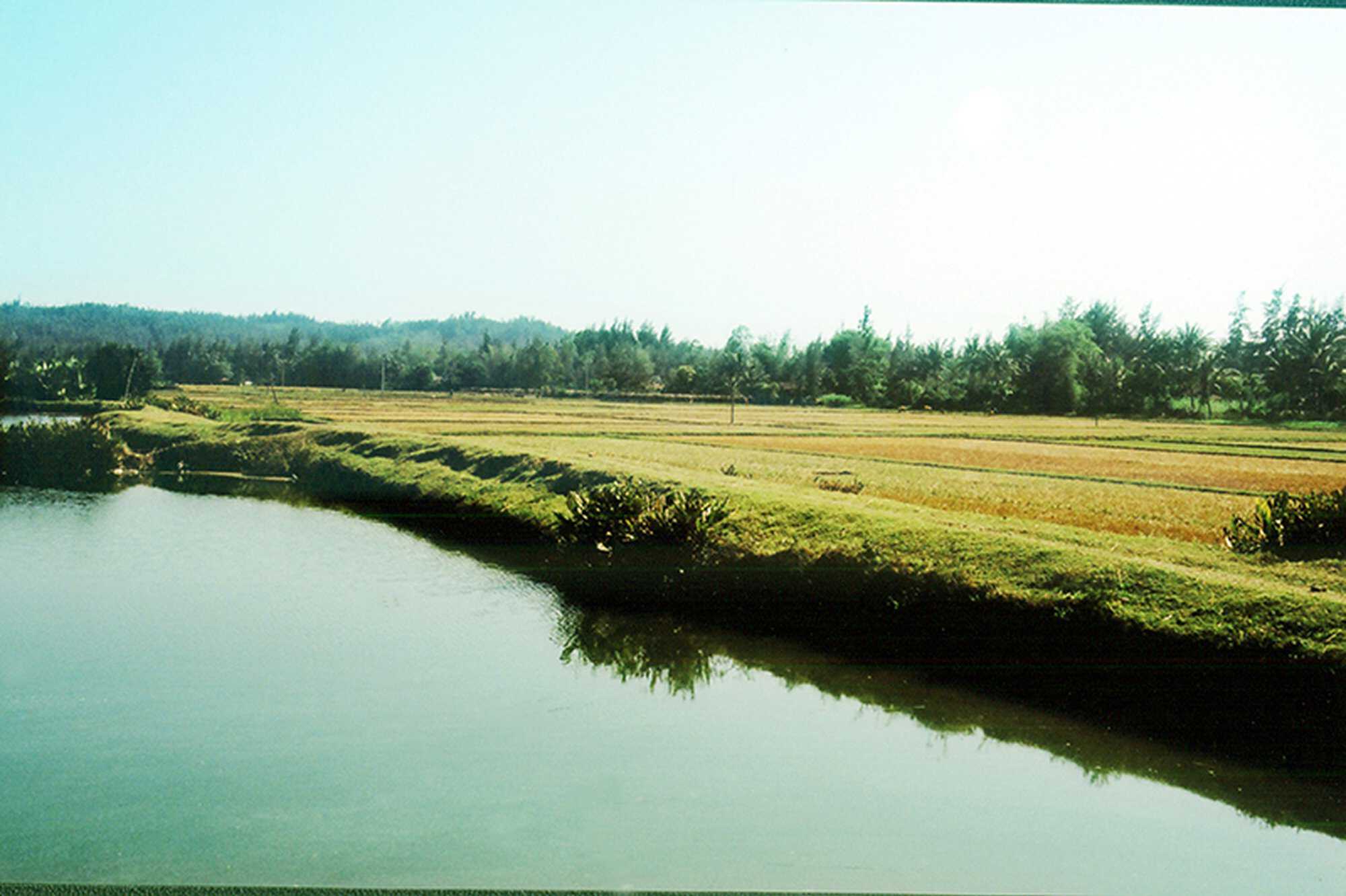
March 17, 1968
Bravo and Charlie Companies are ordered to search the area for the 48th Vietcong Local Battalion. Moving south along the Song Tra Khuc River, Charlie Company continues its destructive path, burning buildings and mistreating Vietnamese civilians.
8:00AM
Lieutenant Colonel Holladay alerts the Assistant Division Commander, Brigadier General George Young, of the alleged mistreatment of civilians at My Lai.
9:30AM
The troops move deeper into the peninsula. Lieutenant Calley orders his men to press on, despite a threat of land mines. Walking at point, Private First Class Paul Meadlo steps on an enemy mine and blows his foot off.
10:00AM
Meadlo is med-evacuated and he shouts to Lieutenant Calley, "God got me, he'll get you - for what we did."
Noon
Brigadier General Young reports to Major Samuel Koster, who suggests that Colonel Henderson conduct a thorough investigation.
Afternoon - Evening
Charlie Company moves south, burning the villages of My Khe-3 and My Khe-1 and killing two Vietcong in the process.
March 18, 1968
9:00AM
Warrant officer Thompson is called in to report to Colonel Henderson, and he describes unnecessary killing of civilians. After the meeting, Thompson is described as being furious at Henderson's lack of concern, and throws his pilot's wings to the ground.
Brigadier General George Young, Colonel Henderson, Lieutenant Colonel Barker, Major Watke and Lieutenant Colonel Holladay hold a crisis meeting in a van at landing zone Dottie. During the meeting, Henderson is instructed to conduct an investigation into the events that occurred on the 16th. However, this investigation proves to contain little else than the interview with Thompson, a brief conversation with Captain Medina, and a fly-over of the My Lai village area. Henderson's investigation report, submitted on April 24, states that 20 civilians had been killed and Thompson's allegations are false.
2:00 - 4:00PM
Charlie Company is evacuated to landing zone Dottie by helicopter. The operation at My Lai is finally over. Within hours of arriving at landing zone Dottie, Henderson briefly interrogates Captain Medina, who in turn instructs his troops to stay silent about the mission.
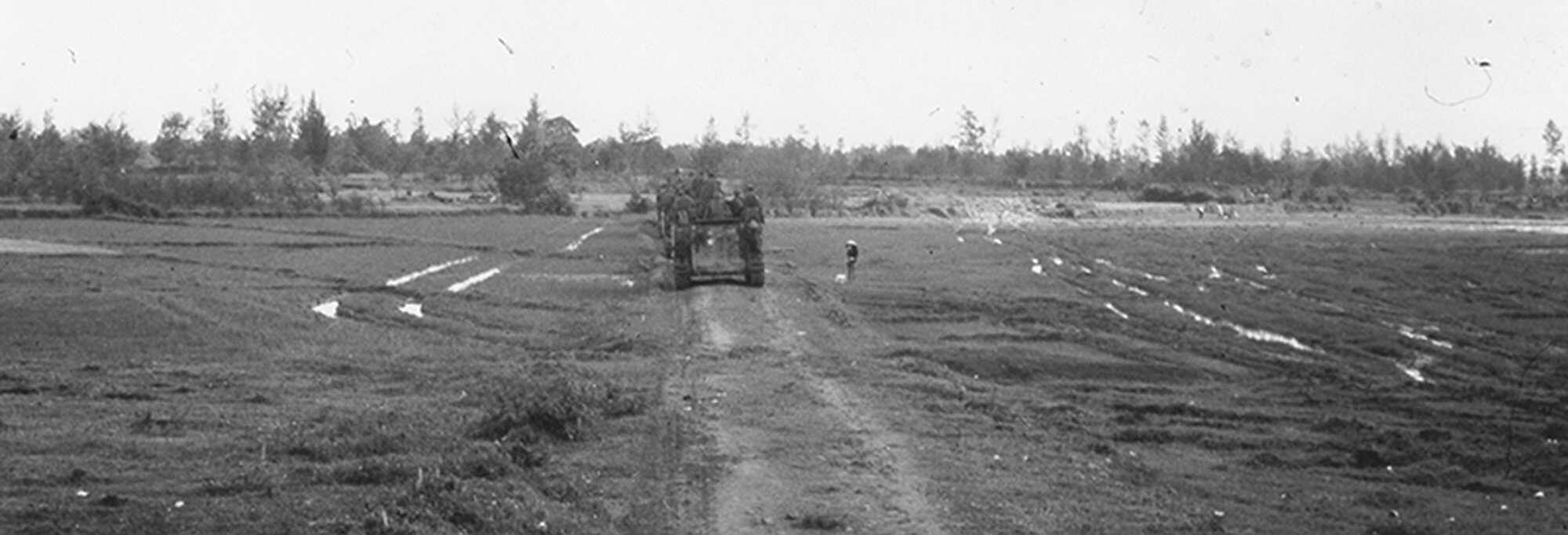
March 22, 1968
A Vietnamese village chief reports to the leader of the Son Tinh District that 570 civilians have been killed and 90% of Son My village has been destroyed, including homes, animals and property.
In an official report regarding the My Lai operation, Lieutenant Colonel Barker concludes the assault was successful: "This operation was well planned, well executed, and successful. Friendly casualties were light and the enemy suffered heavily. The infantry unit on the ground and helicopters were able to assist civilians in leaving the area in caring for and/or evacuating the wounded."
April 8, 1968: The end of Charlie Company
Task Force Barker's mission is declared a success and the Companies involved are disbanded.
April 11, 1968
Echoing the report from March 28, the chief of Son My submits a report to Vietcong officials, alleging that on March 16 a U.S. Army unit had killed more than 400 civilian residents of Son My Village and 90 more in Co Luy (My Khe) Village.
April 20, 1968
Private "Butch" Gruver, who had been reassigned on April 1, sees G.I. veteran Ron Ridenhour and asks him if he had heard about Pinkville. Ridenhour, who had trained with Charlie Company in Hawaii and went on to serve as a door gunner for another company, is told by Gruver that 300-400 civilians had been shot and killed. This piques Ridenhour's curiosity and he begins an informal investigation.
April 24, 1968
Colonel Henderson's investigation into Warrant Officer Thompson's allegations is officially closed. The report concludes that 20 civilians had been killed accidentally.
Finding that report inadequate, Major Koster then instructs Colonel Henderson to conduct a formal inquiry. However, Lieutenant Colonel Barker carries through the investigation, despite his own task force being the subject of the investigation.
Barker's investigation concurs with that of Henderson.
After the chief's report becomes public knowledge, local Vietcong unite in Quang Ngai and distribute leaflets about the incident. American commanders dismiss these leaflets as "propaganda."
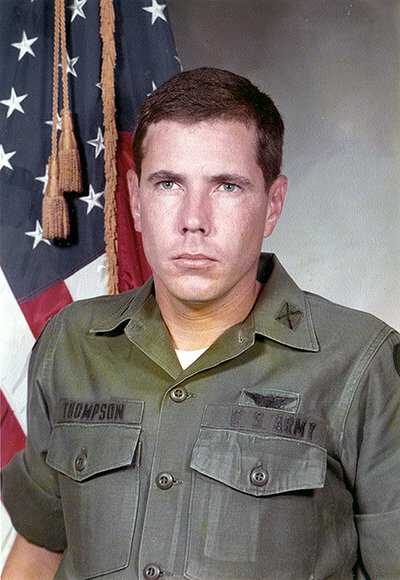
April-May 1968
The army sends Warrant Officer Thompson out in increasingly dangerous situations. Thompson is shot down five times, the last occurring during a mission from Da Nang to an airbase at Chu Lai, which breaks his back.
Many members of Charlie Company have a similar experience, isolated in the mountains surrounded by enemy snipers for over 50 days following the massacre.
June 1968
With a growing interest in what occurred at My Lai, Ridenhour seeks out Sergeant Larry LaCroix at Chu Lai, who specifically mentions Lieutenant Calley's involvement in firing upon a group of civilians with a machine gun.
June 13, 1968
Colonel Barker and Captain Michles (the Captain of Bravo Company) are killed in an aircraft accident.
November 1968
Ron Ridenhour gets testimony from Private Michael Bernhardt, who had refused to take part in the massacre at My Lai. Although Ridenhour is discharged soon after this interview and returns to his home in Phoenix, he continues gathering information about the events of March 16.
March 29, 1969: One Year Later
By the one-year anniversary of the operation at My Lai, Ron Ridenhour believes he has garnered enough evidence. He writes a letter presenting the evidence of a massacre at My Lai.
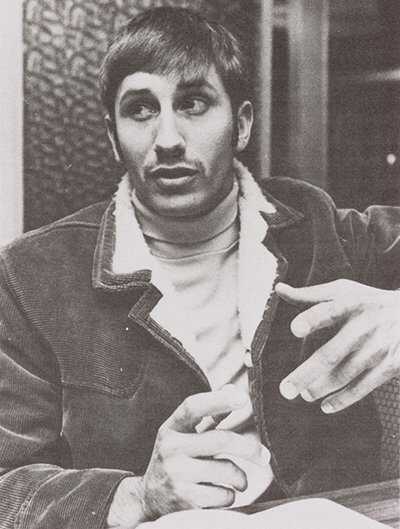
April 2, 1969
Ridenhour sends his letter to 30 prominent men in Washington, D.C., including President Nixon, antiwar Congressman Mo Udall, Secretary of Defense Melvin R. Laird, and Senators Edward Kennedy, Barry Goldwater, Eugene McCarthy, and William Fulbright.
Mo Udall's office is the first to respond directly to Ridenhour, calling for an official investigation.
A week later, Ridenhour's letter will be forwarded to the Army's Chief of Staff, General William C. Westmoreland.
April 12, 1969
Highly decorated veteran Colonel Howard Whitaker receives orders to investigate Ridenhour's allegations and flies to Chu Lai, Vietnam to begin the process. Whitaker reports almost immediately to Washington that the men of Charlie Company mentioned by Ridenhour should be interviewed.
April 23, 1969
The Office of the Inspector General begins a full inquiry.
April 29, 1969
After questioning Ridenhour in Phoenix, Army veteran Colonel William Wilson begins to interview members of Charlie Company in an attempt to determine whether the events at My Lai merited a criminal investigation. In his testimony, Sergeant LaCroix admits that there had been "unnecessary" civilian casualties and mentions that Warrant Officer Thompson had filed a complaint following the operation.
Mid-May 1969
Colonel Wilson interviews Captain Medina, who reveals that Henderson had been directed to conduct an investigation. This is a red flag to Wilson, and when he interviews Henderson on the 26th he initially claims that his informal investigation revealed nothing alarming. Later in the interview, however, Henderson claims that he made both a formal and an informal investigation, the former conducted by Colonel Barker. However, due to Barker's death and the disorganization in the Chu Lai headquarters, no report is located.
June 5, 1969
Lieutenant Calley is identified as a suspect in an official inquiry and recalled to the U.S.
June 13, 1969
Warrant Officer Thompson is asked to identify the officer he argued with when he landed his plane at My Lai, and Thompson picks Lieutenant Calley out of a lineup.
July 17, 1969
Wilson interviews Private Meadlo, who is the first to personally confess his guilt. With Meadlo's confession, Colonel Wilson presents the findings of his investigation to the Office of the Inspector General in Washington.
August 4, 1969
The investigation is turned over to the Criminal Investigation Division (CID) after it is determined that a full criminal investigation is necessary. The CID is led by Chief Warrant Officer André Feher.
August 19, 1969
Authorities at Fort Benning decide to press charges against Lieutenant Calley.
August 25, 1969
Detective Feher interviews former Army photographer Sergeant Haeberle, who shows Feher a collection of personal photographs he had taken at My Lai. These pictures are the first hard evidence regarding the alleged massacre.
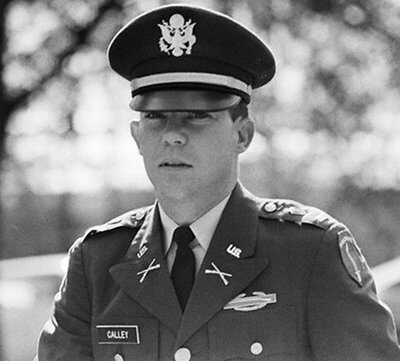
September 5, 1969
The day before his scheduled discharge from the Army, Lieutenant Calley is charged with six counts of premeditated murder. The public information office issues a press release stating Calley was being retained because of an ongoing investigation.
NBC Correspondent Robert Goralski states during an evening broadcast five days later that Lieutenant Calley "has been accused of premeditated murder of a number of South Vietnamese civilians. The murders are alleged to have been committed a year ago and the investigation is continuing."
Late October 1969
Detective Feher travels to Vietnam for further inquiries.
November 11, 1969
Investigative reporter Seymour Hersh interviews Lieutenant Calley at Fort Benning. 35 papers pick up the resulting story on November 13th. Hersh's story is the first to explicitly alert the American press to an investigation, and within days the reporters from the New York Times, Newsweek magazine and ABC descend upon Son My village where some My Lai survivors remain.
November 17, 1969
The New York Times runs a story that quotes survivors of the My Lai massacre, who claim over 567 Vietnamese men, women and children were killed by American soldiers.
November 26, 1969
The General of the U.S. Army, W.C. Westmoreland, issues a directive for an investigation into the My Lai incident, and appoints Lieutenant General William R. Peers to lead the inquiry. Peers, a well-respected core commander in Vietnam, is ordered to examine the adequacy of inquiries into the My Lai massacre. This inquiry is intended to focus on a possible military cover up, whereas Detective Feher and the CID are charged with examining potential war crimes during the operation itself.
In a hearing before the armed services committee of the House and Senate, Secretary of the Army, Stanley Resor, testifies. He presents what was incontrovertibly known about the My Lai massacre and announces the appointment of Lieutenant General Peers to lead the inquiry. Resor also presents Photographer Sergeant Ron Haeberle's photos from that day.
Early December 1969
Lieutenant General Peers' inquiry team grows exponentially, and the number of officers under investigation increases to 46.
The Wall Street Journal publishes an informal poll that claims most Americans don't believe the claims that a massacre took place in My Lai.
December 2, 1969
The Peers inquiry identifies 10 possible suspects for the My Lai killings and begins taking testimony from witnesses.
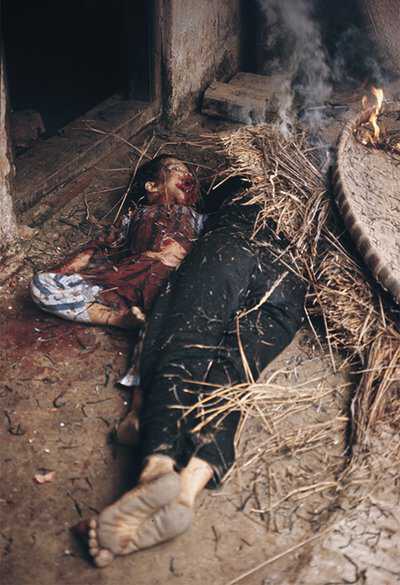
December 5, 1969
Sergeant Haeberle's photos are published and exacerbate the already-strong public outcry over the My Lai massacre. On the CBS Evening News, Walter Cronkite issues a warning about the disturbing images for viewers before showing them. The horrific images immediately cause a country-wide uproar.
December 8, 1969
President Nixon speaks for the first time about the My Lai investigation, acknowledging that it appears a massacre took place, but stating his confidence that it was an isolated incident.
Mid-December 1969
CID begins a census of civilian casualties at My Lai. The census concludes that Charlie Company killed 347 Vietnamese men, women and children. 45 members of Charlie Company are found responsible for crimes ranging from violation of the rules of war to murder.
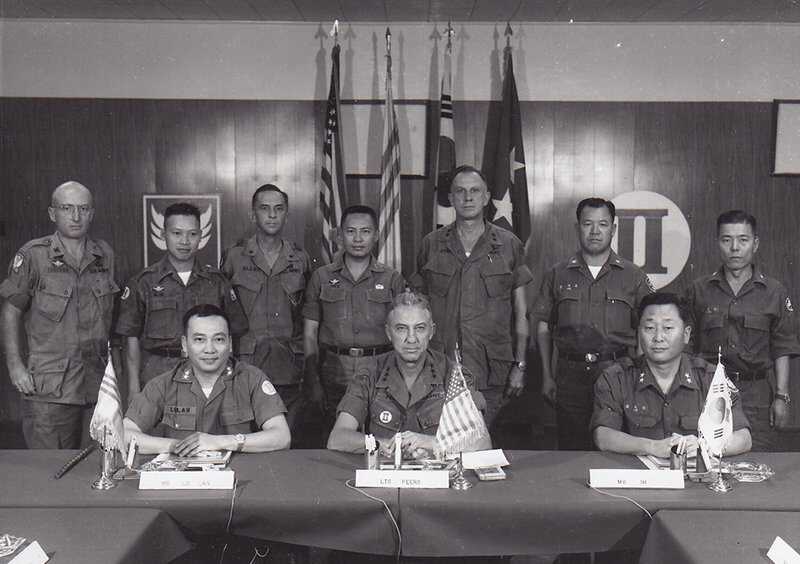
December 24, 1969
The Peers Inquiry has gathered testimony from 39 witnesses. General Peers travels to Vietnam to locate copies of Lieutenant Colonel Barker's formal investigation that both Colonel Henderson and Major General Koster insisted existed, but finds no evidence of a report existing. During his two weeks in Vietnam, Peers also conducts more interviews and takes a reconnaissance flight over the My Lai villages.
January 8, 1969
Returning from Vietnam, Peers expands his team to accommodate multiple simultaneous interviews. The inquiry report deadline is set for March 14th.
March 7, 1970
The Peers Inquiry finishes their 399th interview to complete taking the testimony.
Three days later Captain Medina is charged with assault with a deadly weapon and premeditated murder of over 100 civilians.
March 14, 1970
The Peers Report is delivered to Army General Westmoreland. The Panel names 30 people who had suppressed evidence about the killing of civilians during the My Lai operation. Because of a two-year statute of limitations on military offenses, the army has only two days to press charges.
March 15, 1970
The Army presses charges against 25 men, including Captain Eugene Koutoc (aggravated assault,) Colonel Oran Henderson (dereliction of duty, failure to report a war crime, perjury,) and Brigadier General George Young (dereliction of duty, failure to obey lawful regulations.)

November 17, 1970
Lieutenant Calley's court-martial begins for six counts of premeditated murder that he had been charged with nearly a year before. A conviction of these charges could come with a death sentence, and therefore brought a massive amount of media attention.
During the trial, the military prosecutor insisted that Calley ordered his men to deliberately murder civilians, a direct defiance of the U.S. Rules of Engagement. Calley's defense was that he was simply following the orders of Captain Medina, a defense damaged by Medina's denial of any such order.
January 1971
During his trial for charges of assault with intent to murder at least six My Lai civilians, Sergeant Charles Hutto admits to killing a group of unarmed civilians with an M60 machine gun.
Hutto's acquittal on the 14th sets the precedent that "obeying orders" is a viable defense for mass murder.
February 26, 1971
Despite Lieutenant General Peers' conclusion that General Koster was the motivating force behind the cover-up, charges against Koster are dropped. According to Peers, Koster is the beneficiary of a whitewash, and his only reprimand comes in the form of a reduction in rank.
Lieutenant Calley's trial provides the country with a public presentation of what actually occurred at My Lai. Calley, although not charged with everything that occurred, is accused of causing the deaths of a large percentage of those killed.

March 29, 1971
Calley is found guilty of premeditated murder of 22 civilians and sentenced to life in prison. This sentence is extremely controversial and generates a widespread public outcry, as an overwhelming majority of Americans believe that Calley was simply following orders, and condemn the fact that one soldier was serving as the army's scapegoat. Draft board members resign, veterans turn in their medals, and the "Free Calley" movement is born. Georgian governor Jimmy Carter asked his constituency to drive for a week with their lights on in protest, and flags are flown at half-mast in the state of Indiana.
April 1, 1971
After the White House receives over 5,000 letters of protest in one day, President Nixon intervenes and orders Lieutenant Calley released from the stockade and put under house arrest while his case is under review. Nixon's intervention sets a precedent of exoneration for the officers criminally associated with the incident at My Lai.
Lieutenant Calley's release from the stockade triggers other acquittals later this month. Captain Eugene Kotouc, the intelligence officer charged with assault and murder, will be cleared by a court-martial.
Fall 1971
Captain Medina is acquitted of all charges and Lieutenant Calley's life sentence is reduced to 20 years.
December 18, 1971
After a trial that included testimony from 106 witnesses, Colonel Henderson is acquitted of all charges.
April 16, 1974
Lieutenant Calley's sentence is further reduced from 20 years to 10 years.
Calley will return to the stockade from house arrest, but will be released on parole that November. In total, Calley serves four months in a stockade.
March 6, 1998
Warrant Officer Thompson is recognized for his courage and honesty with the Soldier's Medal. Along with Private Colburn, Thompson accepts his medal at the Vietnam Memorial in Washington, D.C.
August 20, 2009
For the first time Lieutenant Calley speaks publicly about My Lai. In front of the Kiwanis Club of Columbus, OH, he says, "There is not a day that goes by that I do not feel remorse for what happened that day in My Lai. I feel remorse for the Vietnamese who were killed, for their families, for the American soldiers involved and their families. I am very sorry."
November 20, 2009
Former Army photographer Sergeant Ron Haeberle admits that he destroyed photographs that depicted soldiers in the act of killing civilians at My Lai.




